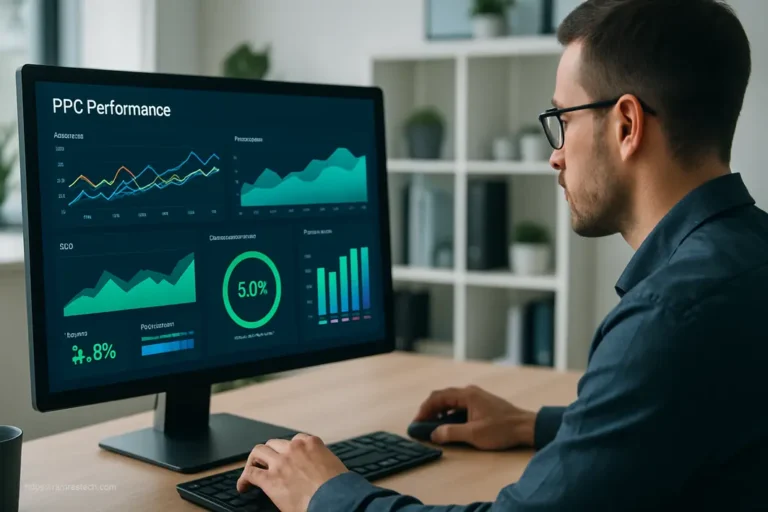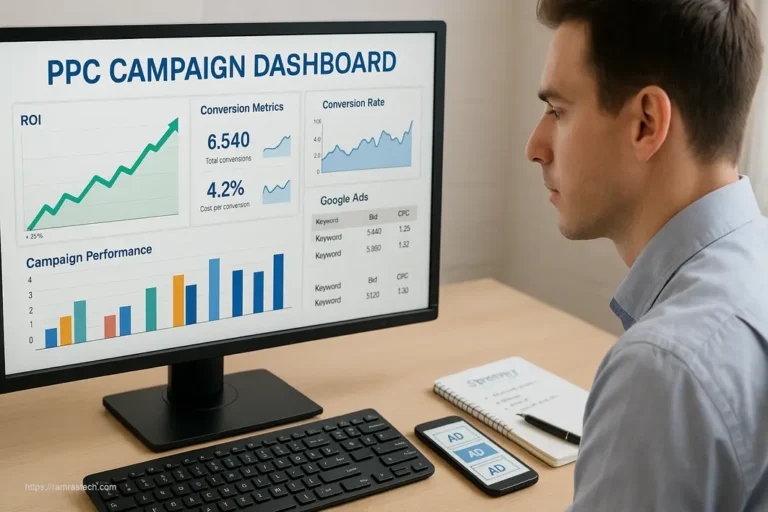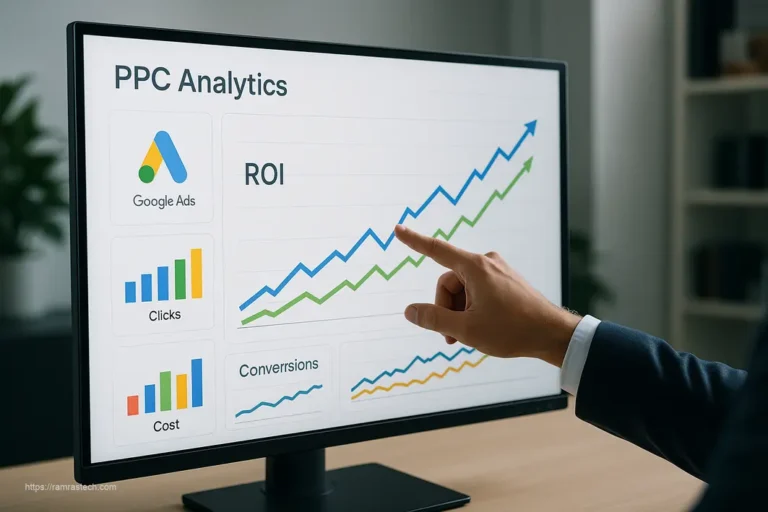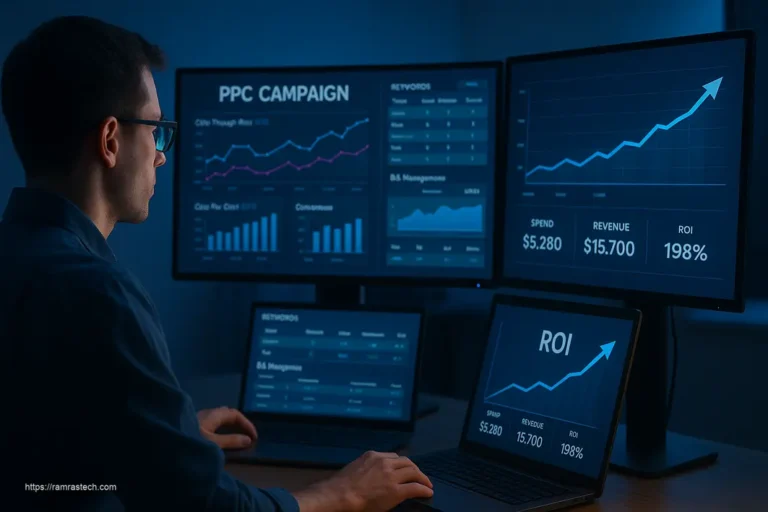Top 7 PPC Tactics for Maximizing Your Return in 2025
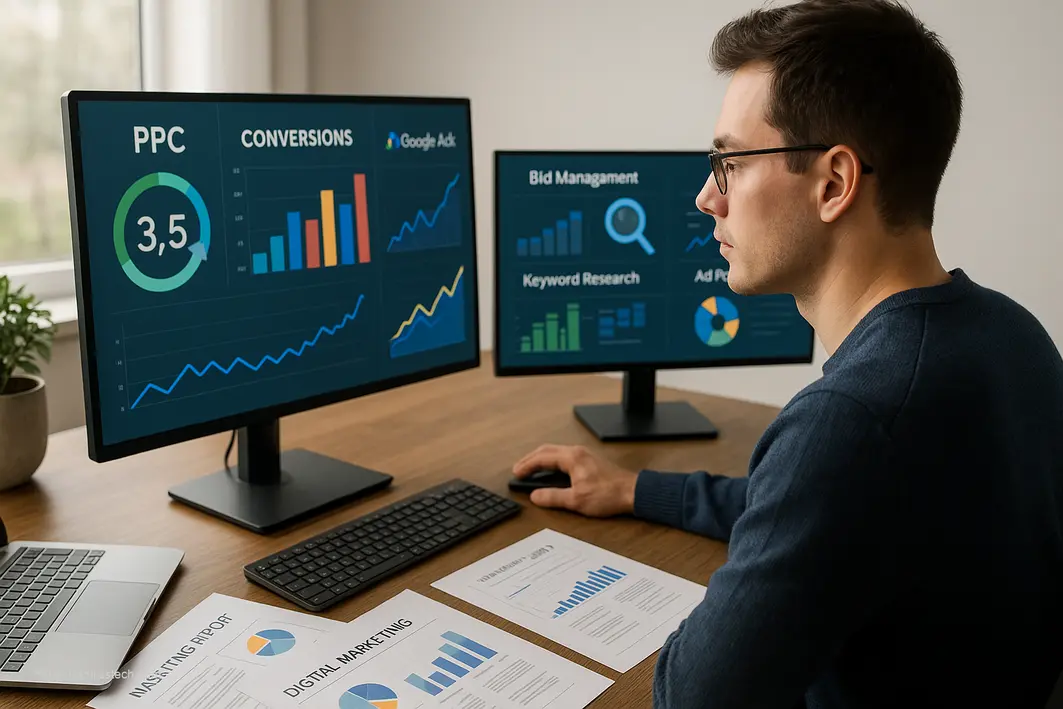
Ever wondered why some businesses consistently outperform their competitors in online advertising while spending less? The secret lies in their mastery of PPC tactics – strategic approaches that maximize return while minimizing wasted ad spend. As digital landscapes evolve and consumer behaviors shift, staying ahead of the curve with cutting-edge PPC tactics isn’t just smart – it’s essential for survival in 2025’s competitive marketplace.
Let’s explore how you can leverage these powerful strategies to transform your advertising performance and drive measurable business growth.
Defining PPC Advertising and Its Significance
Pay-Per-Click (PPC) advertising is a digital marketing model where businesses pay a fee each time someone clicks on their ads. Instead of earning traffic organically, PPC allows you to buy visibility at the top of search results and other high-traffic online spaces, delivering instant exposure to potential customers. The beauty of PPC tactics lies in their ability to connect you with qualified prospects at the exact moment they’re searching for solutions you provide.
Unlike traditional advertising where you pay regardless of results, PPC creates a direct link between spending and performance – you only pay when someone shows interest by clicking. This accountability makes PPC one of the most measurable and transparent forms of advertising available today.
As we navigate 2025’s digital ecosystem, mastering effective PPC tactics isn’t optional – it’s a competitive necessity for businesses seeking growth in increasingly crowded marketplaces.
Understanding PPC and Its Importance in 2025’s Digital Landscape
In today’s hyper-connected world, consumers are bombarded with thousands of marketing messages daily. Breaking through this noise requires precision targeting and strategic placement – exactly what well-executed PPC tactics provide.
PPC remains a cornerstone of digital marketing because it offers:
- Immediate visibility: While SEO takes months to yield results, PPC campaigns can generate traffic within minutes of launching
- Precise audience targeting: Reach exactly who you want based on demographics, interests, behaviors, and intent
- Flexible budget control: Scale spending up or down based on performance, seasonality, or business objectives
- Measurable ROI: Track every impression, click, and conversion to understand exactly what you’re getting for your investment
- Competitive positioning: Secure prime visibility alongside (or above) larger competitors regardless of organic ranking
What makes PPC particularly powerful in 2025 is its adaptability. As privacy regulations tighten and third-party cookies fade away, PPC platforms continue evolving with alternative targeting methods that maintain effectiveness while respecting user privacy.
For businesses feeling the pressure of economic uncertainty, well-optimized PPC tactics offer predictable, scalable customer acquisition channels with controllable costs – a critical advantage in unstable markets.
Game-Changing PPC Tactics to Implement in 2025
Leverage AI-Powered Bidding Strategies for Superior Performance
One of the most transformative PPC tactics in 2025 involves harnessing artificial intelligence to optimize bidding. Traditional manual bidding simply can’t compete with the processing power and pattern recognition capabilities of today’s AI systems.
Modern PPC platforms offer sophisticated automated bidding strategies that analyze countless signals in real-time to adjust bids for each auction. These systems can predict which users are most likely to convert and allocate your budget accordingly – often achieving better results than even experienced human managers.
To implement this PPC tactic effectively:
- Choose the right automated bidding strategy based on your objectives (maximize conversions, target ROAS, target CPA)
- Feed the algorithms quality data by implementing proper conversion tracking across your entire funnel
- Allow sufficient learning time – typically 2-3 weeks – before judging performance
- Regularly review and refine targeting parameters to ensure the AI works within appropriate boundaries
- Monitor key performance indicators to verify the system is achieving your business goals
“We saw a 37% improvement in conversion rate after switching to Performance Max campaigns with fully automated bidding,” shares Mark Reynolds, Digital Marketing Director at Evora Tech. “The key was providing clean first-party data and setting realistic targets based on historical performance.”
Master Audience Segmentation Through First-Party Data Integration
As third-party tracking faces increasing limitations, one of the most powerful PPC tactics involves leveraging your own customer data for targeting. First-party data – information collected directly from your audience through website interactions, purchases, email signups, and account creation – has become the new targeting gold standard.
Successful advertisers in 2025 are building comprehensive data collection systems that capture valuable customer insights while respecting privacy preferences. This data powers highly personalized campaigns that speak directly to specific audience segments based on their demonstrated behaviors and preferences.
To implement this PPC tactic effectively:
- Audit your current data collection practices to identify gaps and opportunities
- Implement proper tagging and tracking across all digital touchpoints
- Create structured audience segments based on value, intent, and relationship stage
- Develop segment-specific messaging that addresses unique needs and pain points
- Use customer match features to target existing customers with relevant upsells or cross-sells
“The difference between generic campaigns and those powered by robust first-party data is night and day,” explains Sarah Chen, Head of Acquisition at NexGen Solutions. “We’re seeing 3x higher conversion rates when we can personalize based on a visitor’s previous interactions with our brand.”
Embrace Multichannel PPC Strategies for Maximum Reach
One of the most effective PPC tactics in 2025’s fragmented media landscape is diversifying your advertising presence across multiple platforms. Relying solely on Google Ads no longer delivers optimal results as users distribute their attention across various platforms and devices.
Forward-thinking marketers are creating cohesive campaigns that reach users across search engines, social media platforms, shopping networks, and even connected TV – creating multiple touchpoints that reinforce messaging and increase conversion probability.
To implement this PPC tactic effectively:
- Analyze your customer journey to identify all potential platforms where your audience spends time
- Allocate budget strategically across channels based on performance and stage-of-funnel role
- Maintain consistent messaging and visual identity while adapting formats to each platform’s specifications
- Implement cross-channel attribution to understand how different platforms contribute to conversions
- Coordinate retargeting sequences to create logical progression rather than repetitive messaging
“Our breakthrough came when we stopped viewing channels in isolation and started seeing them as interconnected touchpoints in a single customer journey,” notes Jason Kwong, CMO at Vertix Commerce. “Our conversion rate increased by 42% when we implemented coordinated messaging across Google, Facebook, Amazon, and Microsoft advertising platforms.”
Optimize Landing Pages for Post-Click Conversion
Even the best PPC tactics for generating clicks fall flat without equal attention to what happens after the click. In 2025, where every marketing dollar faces intense scrutiny, optimizing landing pages for maximum conversion has become a critical competitive advantage.
Leading advertisers recognize that landing page experience directly impacts quality scores, ad rank, and ultimately the cost per acquisition. They’re investing in creating dedicated, highly relevant landing experiences that maintain message match and guide visitors toward conversion with minimal friction.
To implement this PPC tactic effectively:
- Create dedicated landing pages for each campaign rather than sending all traffic to generic pages
- Ensure strong message match between ad copy and landing page content to maintain relevance
- Optimize page loading speed – particularly on mobile devices where abandonment rates soar with slow loading
- Implement A/B testing to continuously improve page elements and conversion rates
- Reduce friction points by simplifying forms, adding trust signals, and addressing common objections
“We reduced our cost per acquisition by 31% without changing our ad strategy at all – the improvement came entirely from landing page optimization,” reveals Thomas Rivera, Digital Strategist at Amplitude Digital. “The key was creating ultra-specific pages that directly answered the questions implied in our keywords.”
Want to explore more effective strategies for maximizing your ROI with PPC advertising? Our comprehensive guide covers additional advanced techniques.
Capitalize on Voice Search and Conversational Keywords
As voice assistants and smart speakers become increasingly integrated into daily life, one of the most forward-looking PPC tactics involves optimizing for conversational search patterns. Voice searches tend to be longer, more question-based, and use natural language compared to typed queries.
Savvy advertisers are adapting their keyword strategies to capture this growing segment of searches, incorporating complete questions, conversational phrases, and long-tail variations that match how people actually speak.
To implement this PPC tactic effectively:
- Research conversational variations of your target keywords using tools that capture actual voice queries
- Structure campaigns around question-based keywords (who, what, when, where, why, how)
- Create ad copy that directly answers the implied question in the search
- Develop content that satisfies the conversational intent behind voice searches
- Use responsive search ads that can adapt to different query formulations
“We increased our impression share by 23% by specifically targeting voice-friendly keyword variations,” shares Emma Walsh, SEM Director at Proxima Digital. “The competition for these longer phrases is substantially lower, while the intent is often more clearly defined.”
Advanced Bid Management Tactics for 2025
Dynamic Budget Allocation Based on Performance Signals
Static budget allocation across campaigns belongs to the past. In 2025, sophisticated PPC tactics include implementing dynamic budget flows that automatically shift spending toward the highest-performing campaigns, ad groups, or even specific times of day.
This approach ensures that every dollar works as efficiently as possible, responding to real-time performance data rather than relying on periodic manual adjustments that inevitably leave opportunity on the table.
To implement this PPC tactic effectively:
- Establish clear performance benchmarks for each campaign segment
- Set up automated rules that adjust budgets based on conversion rate, ROAS, or other KPIs
- Create buffer budgets that can be deployed to high-performing segments when opportunities arise
- Implement dayparting based on historical performance patterns
- Review and refine allocation rules regularly to ensure they reflect current business priorities
Check out our guide on affordable digital marketing strategies to learn more about maximizing results with limited budgets.
Geo-Targeting and Location Bid Adjustments
Not all locations deliver equal value, yet many advertisers still apply uniform bidding across their entire target geography. Advanced PPC tactics now include sophisticated location-based bid adjustments that align spending with the actual value different locations deliver.
By analyzing conversion data at regional, city, or even postal code levels, you can identify high-value geographic pockets where increased bids generate positive ROI, while reducing exposure in underperforming areas.
To implement this PPC tactic effectively:
- Analyze historical conversion data by location to identify performance patterns
- Segment campaigns by geographic performance tiers for maximum control
- Apply bid adjustments based on location-specific conversion rates and values
- Consider local competition and searcher intent differences between locations
- Adjust messaging to reflect local nuances where appropriate
Enhancing Google Ads Performance in 2025
Leveraging Google’s Latest Ad Extensions
Ad extensions remain one of the most underutilized PPC tactics despite their proven ability to improve click-through rates and quality scores. In 2025, Google continues to expand available extension types, offering new ways to enhance ad visibility and relevance.
Strategic use of extensions not only increases the physical size of your ads (commanding more attention) but also provides additional conversion paths and information that can qualify clicks before they happen.
To implement this PPC tactic effectively:
- Implement all relevant extension types for your business model
- Customize extensions for each campaign based on specific objectives
- Use structured snippets to highlight key product categories or service offerings
- Add callout extensions that emphasize unique selling propositions
- Utilize lead form extensions to capture prospects directly from the SERP
For a more comprehensive overview, explore our article on understanding Google Adwords ad extensions.
Mastering Responsive Search Ads
With traditional expanded text ads now sunset, mastering responsive search ads (RSAs) has become a non-negotiable PPC tactic. RSAs allow Google’s machine learning to test different headline and description combinations to identify what resonates best with specific searchers.
When properly implemented, RSAs can dramatically improve relevance across a wide range of search queries, improving both click-through and conversion rates.
To implement this PPC tactic effectively:
- Create diverse headlines that cover different selling points and approaches
- Include at least 2-3 headlines containing your keywords
- Vary headline length and structure to give the system flexibility
- Ensure descriptions complement each other rather than repeating information
- Pin critical information only when absolutely necessary, otherwise allow the system to optimize
Building ROI-Driven PPC Campaigns
Implementing Comprehensive Conversion Tracking
One of the most fundamental yet often neglected PPC tactics involves setting up proper conversion tracking across the entire customer journey. Without accurate conversion data, optimization decisions are based on guesswork rather than evidence.
In 2025’s privacy-focused landscape, implementing conversions tracking requires a thoughtful approach that balances measurement needs with compliance requirements.
To implement this PPC tactic effectively:
- Track both primary and secondary conversion actions to understand full funnel performance
- Assign appropriate values to different conversion types based on their business impact
- Implement enhanced conversions where possible to improve measurement accuracy
- Set up offline conversion imports for businesses with non-digital sale completion
- Create custom conversion windows that reflect your actual sales cycle
Strategic Remarketing and Audience Targeting
Perhaps no PPC tactic offers better ROI potential than strategic remarketing to people already familiar with your brand. These warm audiences typically convert at significantly higher rates than cold traffic, making them prime candidates for specialized messaging.
Sophisticated remarketing in 2025 goes beyond simple site visitor targeting to include segmented approaches based on specific behaviors, engagement levels, and previous interactions.
To implement this PPC tactic effectively:
- Segment remarketing audiences based on specific behaviors and engagement depth
- Create funnel stage-appropriate messaging for each audience segment
- Implement frequency caps to prevent ad fatigue
- Exclude recent converters from acquisition-focused campaigns
- Develop special offers for high-intent segments that haven’t converted
Looking for more ways to maximize engagement? Check out our guide to boosting engagement with social media hacks.
Paid Advertising Insights and Future-Proofing for 2025
Preparing for a Cookieless Future
One of the most critical PPC tactics for 2025 involves adapting to the declining effectiveness of third-party cookies for tracking and targeting. As browsers phase out cookie support and privacy regulations tighten, advertisers must develop alternative approaches to maintain targeting precision.
Forward-thinking marketers are building first-party data ecosystems that provide targeting capabilities independent of third-party tracking, ensuring continuity as the privacy landscape evolves.
To implement this PPC tactic effectively:
- Invest in first-party data collection through value exchanges with your audience
- Implement server-side tracking to reduce reliance on client-side cookies
- Explore contextual targeting options that don’t require user-level identification
- Test privacy-centric identity solutions like Unified ID 2.0 or Google’s Topics API
- Build direct relationships that enable permission-based marketing
Integrating PPC with Overall Marketing Strategy
Perhaps the most transformative PPC tactic for 2025 involves breaking down the silos between paid advertising and other marketing channels. Leading organizations now view PPC as an integrated component of their overall marketing ecosystem rather than an isolated tactic.
This holistic approach enables consistent messaging across touchpoints, shared insights between channels, and more accurate attribution of marketing impact.
To implement this PPC tactic effectively:
- Align PPC messaging with broader brand campaigns for consistent customer experience
- Share audience insights between organic and paid channels
- Coordinate retargeting efforts with email marketing sequences
- Use PPC to test messaging that can inform other marketing channels
- Implement cross-channel attribution to understand how PPC interacts with other touchpoints
Interested in broader digital marketing strategies? Our digital marketing masterclass covers comprehensive approaches for 2025 success.
Frequently Asked Questions About PPC Tactics
What PPC tactics work best for small businesses with limited budgets?
Small businesses should focus on highly targeted campaigns with narrow keyword selection and tight geographic boundaries. Prioritize high-intent, low-competition keywords to maximize ROI. Implement conversion tracking immediately to identify what’s working, and consider starting with remarketing to past website visitors who already showed interest in your products. Finally, focus on quality score optimization through relevant ad copy and landing pages to lower your cost per click.
How often should I update my PPC tactics and campaign structure?
PPC campaigns require regular monitoring but not constant restructuring. Conduct weekly reviews of key performance metrics and make minor adjustments to bids and budgets as needed. Schedule deeper account reviews quarterly to evaluate overall strategy, test new features, and implement structural changes. However, always respond promptly to significant performance changes or market shifts regardless of your regular schedule. The digital advertising landscape evolves quickly, so successful advertisers balance consistency with adaptability.
Which metrics matter most when evaluating PPC tactics?
While click-through rate and quality score provide valuable feedback on ad relevance, the most important metrics align with business objectives. For most advertisers, this means focusing on conversion rate, cost per acquisition, and return on ad spend (ROAS). Additionally, track conversion paths to understand how PPC interactions contribute to eventual sales, even when they’re not the last click. Remember that impression share and average position can provide competitive context for your performance.
How do I know if my PPC tactics are really working?
Effective PPC tactics demonstrate clear progress toward business objectives beyond simple click metrics. Compare your cost per acquisition against your customer lifetime value to ensure profitability. Track month-over-month and year-over-year trends to identify sustained improvements. Additionally, implement tests with control groups when possible to isolate the impact of specific tactical changes. Finally, look beyond immediate conversion data to understand how PPC influences your overall marketing ecosystem and customer journey.
What are the biggest PPC tactical mistakes to avoid in 2025?
The most costly PPC mistakes include neglecting proper conversion tracking, targeting keywords with unclear intent, sending traffic to generic landing pages, and failing to test ad variations regularly. Equally damaging is ignoring the interplay between organic and paid results, which can lead to cannibalizing your own traffic. In 2025’s privacy-focused landscape, over-reliance on third-party data without developing first-party alternatives represents a significant strategic risk. Finally, allowing campaigns to run on autopilot without regular optimization virtually guarantees declining performance over time.
Conclusion: Taking Your PPC Tactics to the Next Level
As we navigate 2025’s complex digital advertising ecosystem, implementing advanced PPC tactics isn’t just about staying competitive – it’s about creating sustainable advantage in an increasingly crowded marketplace.
The most successful advertisers are those who balance technical optimization with strategic insight, continuously testing new approaches while maintaining disciplined measurement of results. They recognize that effective PPC isn’t about chasing the latest shiny feature but about aligning advertising tactics with fundamental business objectives.
By implementing the PPC tactics outlined in this guide – from AI-powered bidding and first-party data integration to multichannel strategies and conversion-focused landing pages – you’ll position your advertising for maximum impact regardless of how platforms and technologies continue to evolve.
Remember that the most powerful PPC tactic remains the commitment to continuous learning and adaptation. The specific techniques that drive success will inevitably change, but the principles of relevance, measurement, and customer-centricity remain constant foundations for advertising excellence.
What PPC tactics have delivered the best results for your business? Share your experiences in the comments below!
